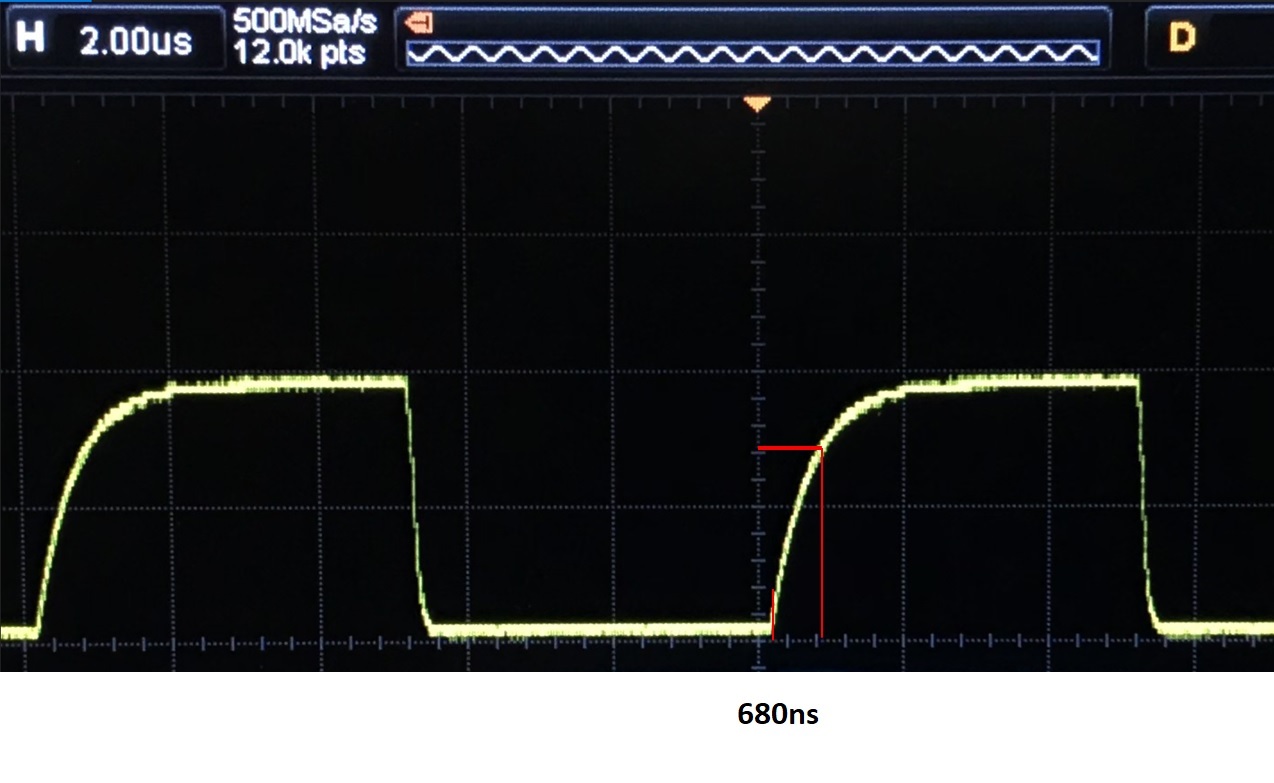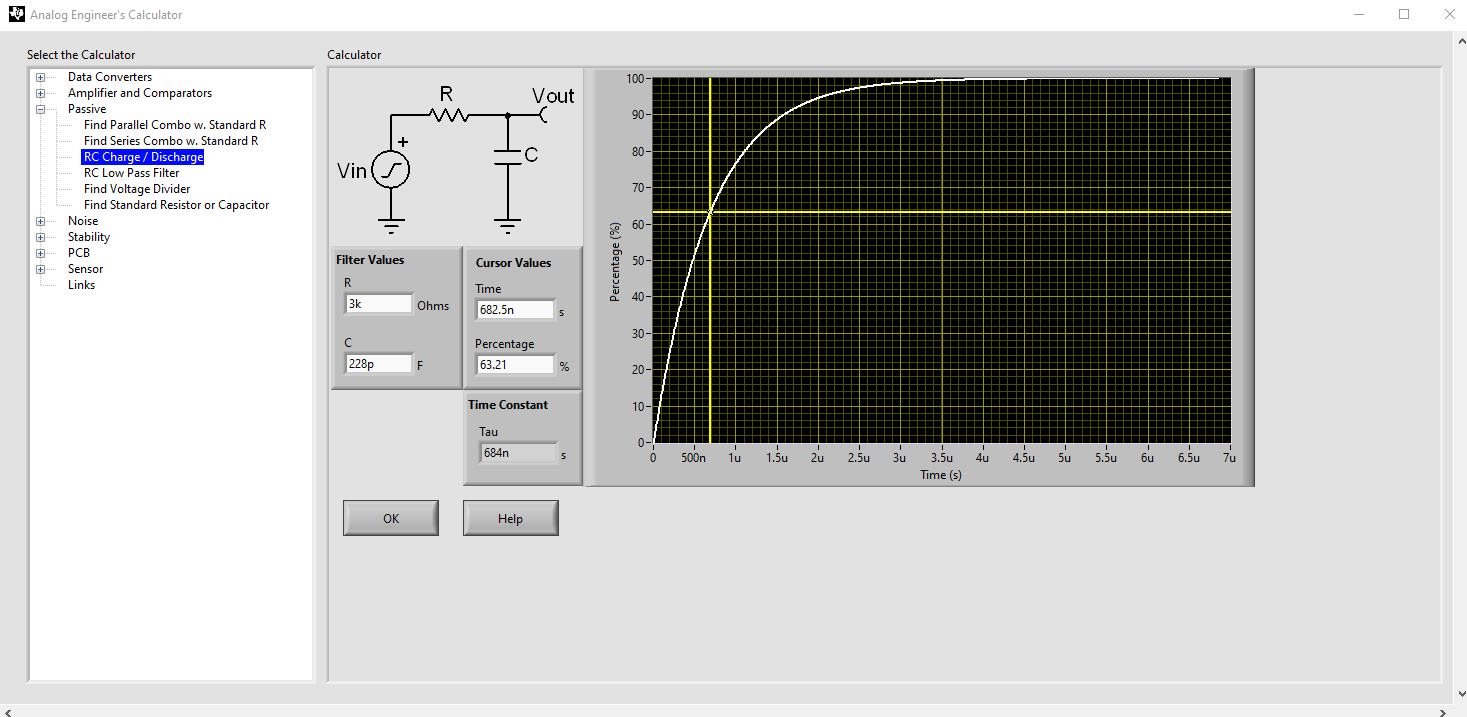Hi team,
I have designed a small breakout board to test a number of INA260 current monitors on the same I2C bus. I am getting widely fluctuating and inaccurate readings from each of the INA260 ICs. You can see readings from one chip when no current is supplied and when 3A is supplied. All chips exhibit the same behaviour.
I have noticed that the I2C signals rise time are quite slow (rise time ~1.1uS @ 100kHz). In the image below, the yellow trace is SCK and the blue trace is SDA. Could this cause misreadings? The capacitance between both SDA/SCK and ground is abnormally large - ~3.8uF (on the board with four INA260 shown below). I subsequently halved the pull up resistors to 1.5kOhm and the rise time dropped to ~500ns, which should be within I2C specs for a 100kHz clock. The problem still occurs. I’m including a video of oscilloscope readings where we clearly see the LSB of the packets sent from the INA260 fluctuating. This leads me to believe that there is another issue besides the high capacitance of the I2C lines. I’d still like to resolve this problem because I need as low of a power consumption as possible.
I am at a loss as to what could cause this capacitance. A bare PCB shows no capacitance when probed, and one PCB populated with a single INA260, its 0.1uF decoupling capacitor and pin headers reads ~2uF. I even removed the decoupling capacitor to measure the capacitance and found the same value. There are no other components on the board at that point.
I’ve included the schematics and a screenshot of the board design (with the SDA trace highlighted as an example).
So the first question would be, what could be the cause this large capacitance? And the second question would be, besides this issue, what else could cause the fluctuating readings?
INA260_Fluctuating_Readings.zip
Best regards,



